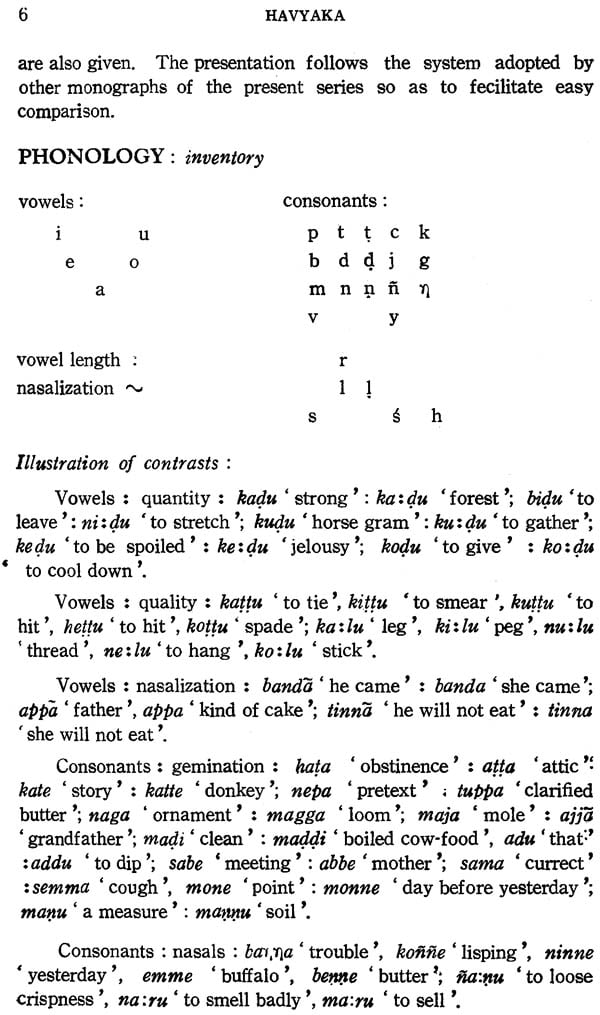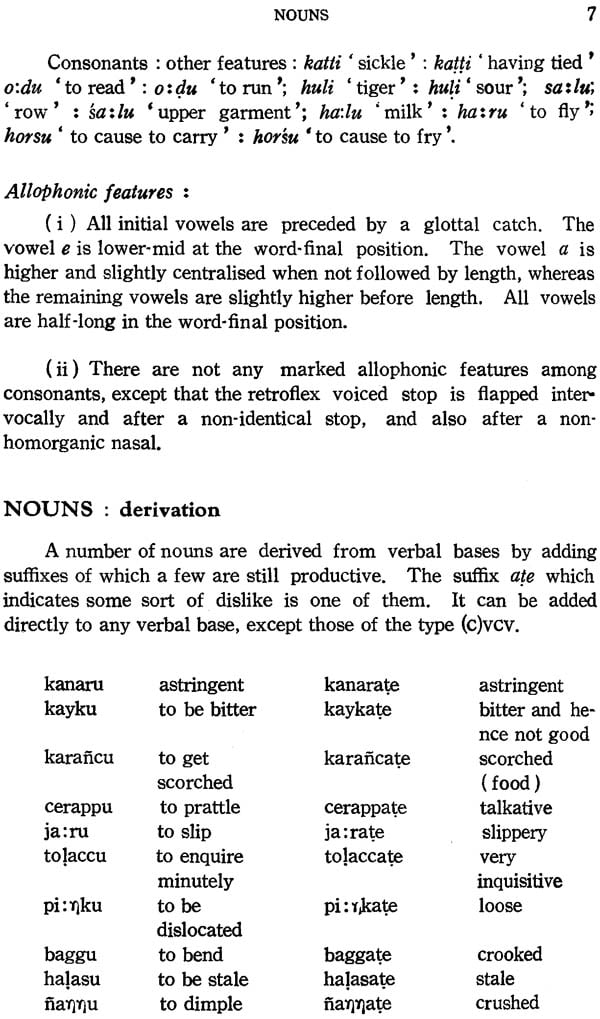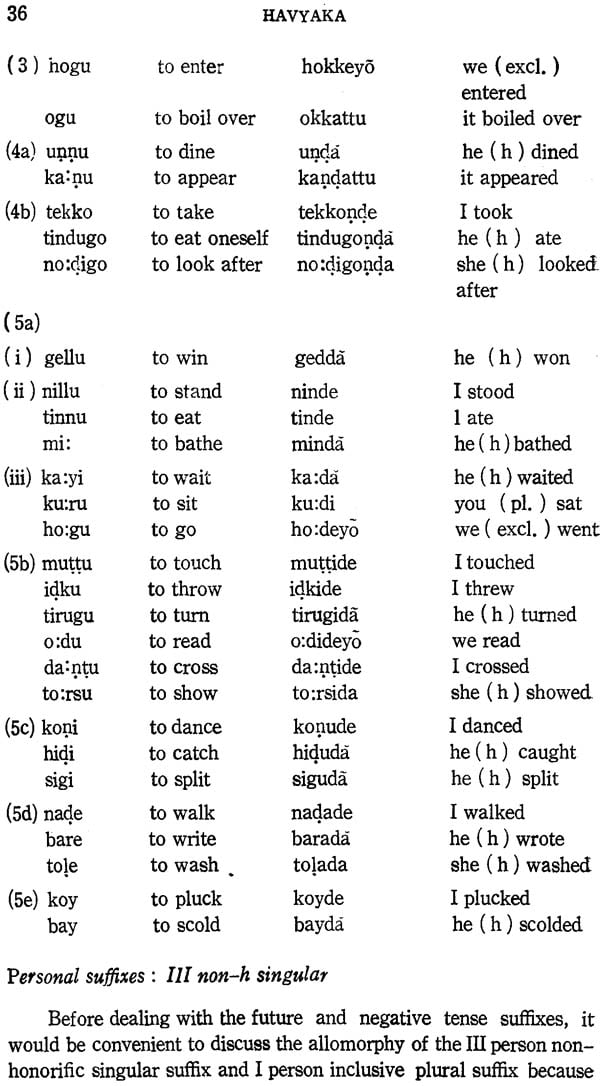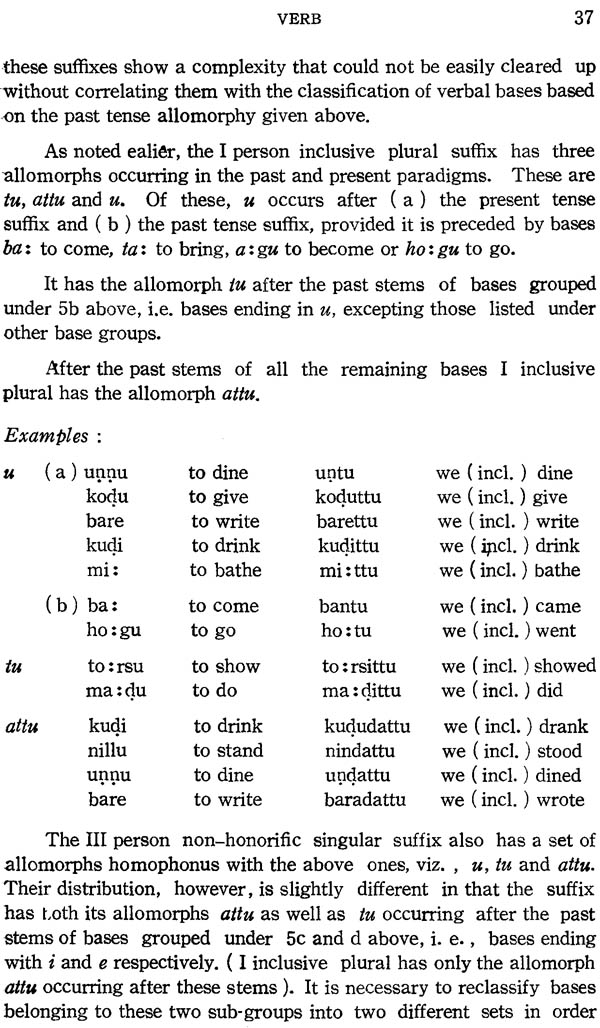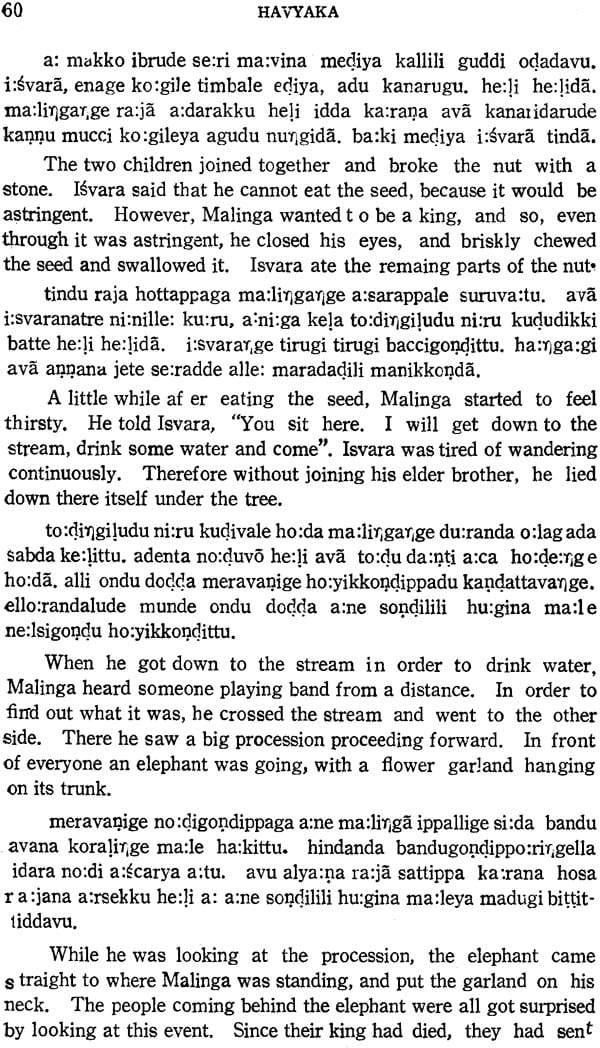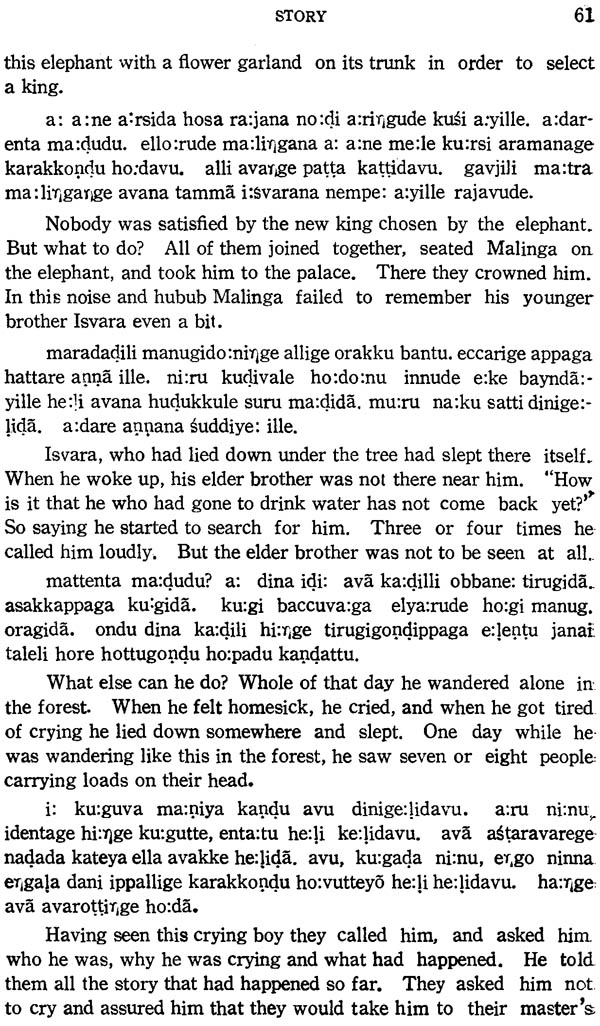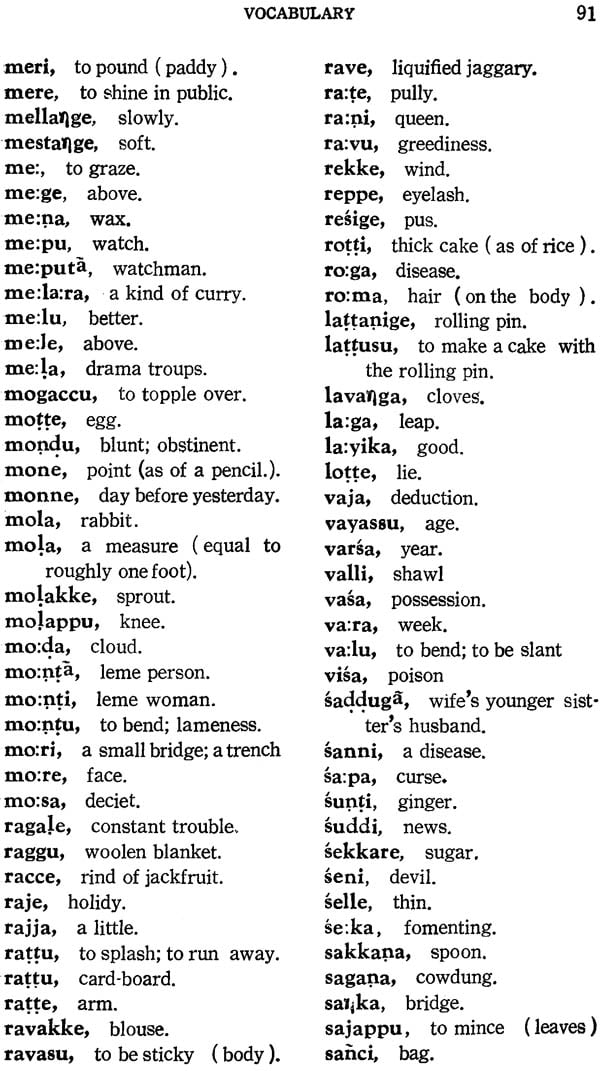
An Outline Grammar of Havyaka
Book Specification
| Item Code: | NAM054 |
| Author: | D. N. S Bhat |
| Publisher: | Deccan College Postgraduate and Research Institute |
| Language: | English |
| Edition: | 1971 |
| Pages: | 104 |
| Cover: | Paperback |
| Other Details | 8.5 inch x 5.5 inch |
| Weight | 130 gm |
Book Description
Havyaka is one of the most interesting coastal dialects of Kannada (a Dravidian Language). It is spoken by the Havyaka Brahmins of the two Kanara districts of Mysore , India. It has a number of sub—dialects, varying slightly from one another, and the present sketch is based on the variety prevalent in the South Kanara district (Puttur Taluk).
It has been rather wronugly assmed by many Dravidian scholars that the type of Kannada prevalent in the coastal districts of Mysore is either identical or very similar to the written dialect of Kannada. This was an unfortunate assumption because it has prevented these scholars from realising the fact that the various dialects of Kannada found in these two coastal disricts of Mysore are quite distinct from other Kannda dialects and their history of separate development could be reconstructed for atleast one thousand years.
The coastal belt of Mysore is really a treasure house of languages and dialects. In addition to Kannada and its many variants, several dialects of Konkani, Marathi (and Urdu to a certain extent) prevail over the whole belt. In the southern part of this area, there also exist various dialects of Tulu, Malayalam and Tamil, and also a few tribal languages such as Koraga and Belari. All these languages and dialects show distinct geographical and social variants which are perhaps too many and too sharply distinguishable from one another as compared to the languages and dialects found in other regions in India. The Koraga language, for example, though spoken by only about a thousand individuals, has atleast three distinct regional dialects which are mutually unintelligible. Social (caste) distinctions are also reflected by sharp dialectal variations in the languages of this region.
The dialects of Kannada prevalent in this coastal belt of Mysore could be classified into two distinct varieties. The first is the type used as the mother tongue by about three hundred thousand persons in the southern district and by about a million and half in the northern district. This variety has many social variants, such as the Havyaka, Kota, Halakki, Gauda, Kumbara etc. each showing its own regional sub-variants. All of them could, however, be grouped into a single speech variant because, there are a number of interesting phonological and grammatical features which set them apart from the remaining Kannada dialects.
The second type of Kannada prevalent along the coastal belt, especially in the southern district, is very similar to the standard written dialect of Kannada. It is acquired as a second language by all its speakers who use at home either one of the several Kannada dialects of the first type, or one of the distinct languages of the area such as Tulu, Malayalm, Konkani or Marathi. It is readily recognizable as bookish and has evidently grown out of the type of Kannada used in all the local schools as the medium of instruction. Since this type of Kannada is prevalent throughout the state of Mysore in its written form and also in its spoken form to a limited extent, one cannot consider it as the regional variant of the coastal belt. Hence it is only the former type that could be considered as the coastal dialect of Kannada.
One major difference between the coastal (of the first type) and the non–coastal dialects of Kannada is the absence of e>i, o>u alternation in the former. It has been established on inscriptional evidence that the vowels e and o had become i and u respectively while occurring in the first syllable of words of the type (c) vcv-, provided the second syllable contained a high vowel. This change is said to have taken place during the 8th century A.D. and all modern Kannada dialects excepting those of the coast show the effects of this change.
Examples:
| gloss | non–coastal dialects Standard |
non–coastal dialects Nanjangud |
coastal dialects Havyaka |
coastal dialects Halakki |
| Ear | kivi | kivi | kemi | kemi |
| In front | idiru | (yadra) | eduru | eduru |
| Rat | ili | ili | eli | eli |
| fold | niri | –– | neri | nerigi |
| White | bili | bili | beli | beli |
| Elder | hiri | hiri | heri | heri |
| Toremain | uli | uli | oli | oli |
| To boil | kudi | kudi | kodi | kodi |
| Lip | tuti | tuti | todi | todi |
| To itch | turisu | tursu | torsu | tori |
| To fry | huri | huri | hori | hori |
| Powder | hudi | –– | hodi | –– |
Secondly there is a major morphological feature which separates the coastal dialects from the non-coastal dialects of Kannada. Old Kannada had three tense paradigms (past, present and future) and one negative paradigm for its verbs; of these, only the past is retained by the modern non-coastal dialects. They have developed a new non-past paradigm with the help of an old continuous participle, a subjunctive paradigm and also a non-past perfect paradigm which could in most cases be analysed as a compound formation with the root iru ‘to be’.
The coastal dialects, however, have retained the future and the negative paradigms (in addition to the past paradigm) and have lost only the present paradigm (which in itself was a compound formation with the root a:gu ‘to become’ in old Kannada); it has replaced this latter by a paradigm similar to the non-past paradigm occurring in the non-coastal dialects.
As in the previous instance, the standard dialect goes with the non-coastal dialects of Kannada by retaining the past paradigm of old Kannada only, and developing a new non-past paradigm. The future and the negative paradigms did occur in an earlier form of the written dialect which today however appear in the school grammars of Kannada only.
| Introduction | 1 |
| Phonology | 6 |
| Nouns: Derivation | 7 |
| Plural | 15 |
| Case | 17 |
| Pronouns | 21 |
| Verb | 23 |
| Derivation | 24 |
| Sample Paradigm | 29 |
| Past Tense | 32 |
| Personal Suffixes | 36 |
| Other Finite Suffixes | 39 |
| Non-Finite Suffixes | 45 |
| The root iru to be | 49 |
| The root aradi | 50 |
| Sentences | 51 |
| Story | 58 |
| Vocabulary | 67 |
